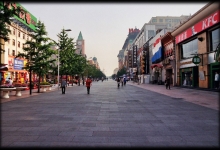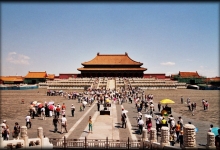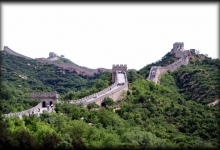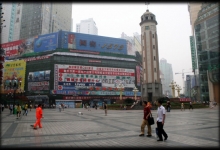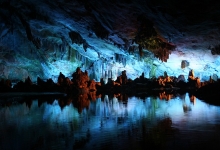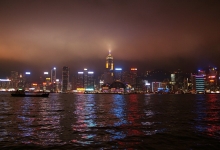The following day we was our day to visit the Great Wall of China (at Badaling, the most accessible section from Beijing). The previous day, we had already scoped out the departure point for the public bus that we thought would take us to the Great Wall.
No one on the bus spoke English, but we confimed with the driver that this was indeed the bus for the Great Wall. As we started out, a tour guide spoke to the rest of the bus in Mandarin. Then, inexplicably, in the middle of Beijing, the bus stopped and everyone piled out. We sat, confused. We finally figured out that they had all gone on a guided visit of another site and would be back in 2 hours! We finally met someone who was able to translate for us, who explained that the “tourist bus #4” to Badaling was in fact an all-day Chinese guided Tour, stopping at 4 different places – definitely not what we wanted! Fortunately, we met a couple of other confused Europeans who only wanted to go the Great Wall. We bailed on the tour group, and piled into a taxi that we rented for a day, for $7 each. I still don’t know if there’s any public buses to the Great Wall. If we’d stayed with the tour group, I would guess that we wouldn’t have had more than 2 hours at the Great Wall.After the problems in Beijing, we arrived relatively late at the Great Wall (10:30AM). The taxi dropped us off about a 15 minute walk from the wall (we’re not sure why, there was a road that led directly there). Where the road goes under the wall, it is possible to walk on either side. Curiously enough, one side was almost completely empty while the other side was full of tourists (maybe tour groups?). Hiking up the wall is very hard work – even at Badaling, the most accesible part of the wall. The steps are very steep in places. The railings help, but unfortunately a lot of them are designed for short Asians and not giant Westerners, so they are not always comfortable to hold without dislocating a shoulder.
There are multiple ways to get up and down the wall as it snakes around the mountains at Badaling – there’s a couple of chairlifts and a “sliding car” system. Access to these improvements wasn’t clear to us – we had no map of the area and we didn’t want to wander far out of the way and miss our taxi home. Other ‘development’ at this section of the wall includes loudspeakers piping in traditional Chinese music. Fortunately, the souvenir and drink sellers are kept to a minimum (they are relegated to the turrets) and are not that aggressive.





